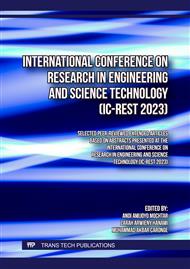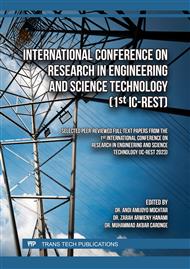p.17
p.23
p.35
p.43
p.53
p.61
p.69
p.75
p.85
Design and Manufacture of Cardiopulmonary Resuscitation Equipment Using Manual and Automatic Mode
Abstract:
Emergency conditions are situations that can happen to anyone, anywhere and anytime. An emergency is a life-threatening condition in an emergency, such as cardiac arrest, resulting in a sudden loss of blood flow due to failure of the heart to pump effectively, which can lead to death. The key factor in increasing the number of survivors is the quality of cardiopulmonary resuscitation (CPR). Quality of CPR is indicated by a chest compression frequency of 100 - 120 beats/minute and a depth of 5mm, with a minimum lag time. Cardiac pump resuscitation (CPR), which provides circulatory and respiratory support, is a common therapy applied to almost all cardiac or respiratory arrest cases. Compression and ventilation are effective measures of cardiac pump resuscitation (CPR). This research refers to the system, design, and manufacture, including the chassis and assembling of the control system manually and automatically. Controlling the equipment using Arduino Uno, motor driver, and dimmer to manually and automatically adjust or control the compression speed manually and automatically. The results showed that the greater the applied voltage, the greater the compression. The increase occurred from 109, 112, and up to 119 compressions per minute manually, while automatic increases occurred from 110, 113, and up to 119 compressions per minute and with a compression depth of 40 mm
Info:
Periodical:
Pages:
53-60
Citation:
Online since:
March 2025
Keywords:
Price:
Сopyright:
© 2025 Trans Tech Publications Ltd. All Rights Reserved
Share:
Citation:



